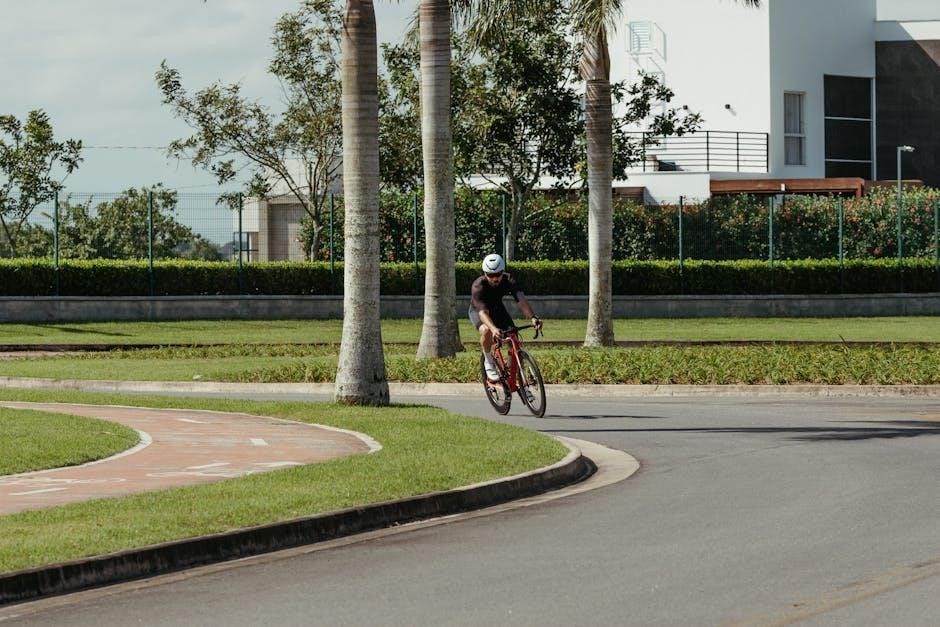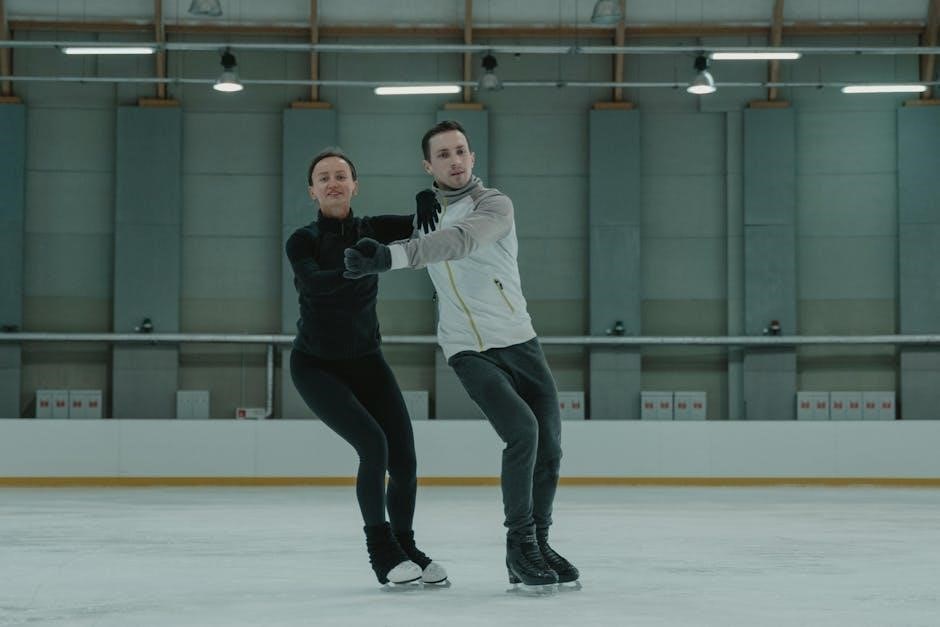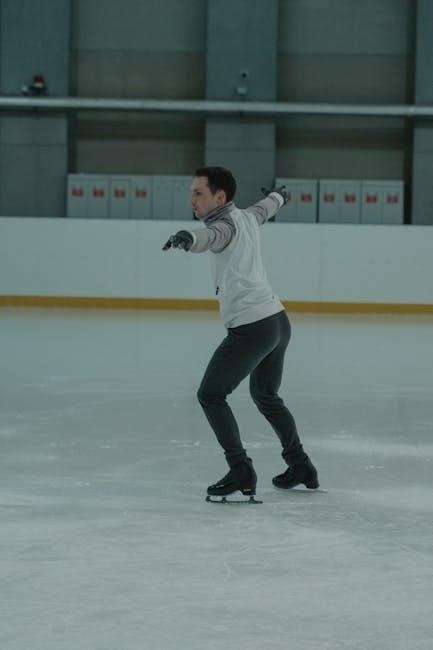Passive range of motion exercises involve gentle, assisted movements to improve joint flexibility and circulation, benefiting individuals with limited mobility or recovery needs.
Definition and Importance of Passive ROM Exercises
Passive range of motion (ROM) exercises involve gentle, assisted movements where an external force, such as a therapist or caregiver, moves a person’s joints through their natural range. These exercises are crucial for maintaining joint flexibility, improving circulation, and preventing stiffness, especially for individuals with limited mobility. Regular practice helps reduce the risk of complications like frozen shoulder and supports recovery after injury or surgery, making them a cornerstone of rehabilitation and physical therapy programs.
Who Can Benefit from Passive Range of Motion Exercises?
Passive ROM exercises are ideal for individuals with limited mobility, such as those recovering from surgery, injury, or stroke. They also benefit people with chronic conditions like arthritis or quadriplegia. Additionally, these exercises support rehabilitation programs by improving circulation and reducing stiffness. Anyone requiring assistance with movement, including elderly individuals or those with severe physical disabilities, can gain significant advantages from regular practice, enhancing their overall joint health and functional ability.

How to Perform Passive Range of Motion Exercises
Performing passive ROM exercises involves gentle, guided movements of joints without active muscle engagement, ensuring smooth and controlled motions to maintain flexibility and mobility effectively.
Proper Preparation and Equipment Needed
Before starting passive ROM exercises, ensure a clean, flat surface and wear comfortable clothing. Use supportive devices like pillows or straps to maintain proper alignment. A therapist or caregiver should guide movements gently, communicating closely with the client. Equipment such as resistance bands or splints may be needed for specific joints. Move slowly and smoothly, avoiding sudden jerks. Always follow professional guidelines to prevent injury and ensure effectiveness; A calm environment and proper positioning are essential for a safe and beneficial experience.
Supporting the Joint During Movement
Properly supporting the joint is crucial during passive ROM exercises to ensure safety and effectiveness. Use pillows, straps, or your hands to stabilize the area above and below the joint. Maintain gentle pressure to guide the movement without causing discomfort. Keep the joint aligned with the direction of motion to prevent strain. Move slowly and smoothly, avoiding jerky actions. Proper support helps maintain joint stability and promotes a full, injury-free range of motion. Communication with the client ensures comfort and correct positioning throughout the exercise.
Techniques for Smooth and Gentle Movement
Performing passive ROM exercises requires slow, controlled movements to avoid injury. Use gentle pressure, gradually increasing the range as comfort allows. Avoid jerky or bouncy motions, which can cause strain. Breathing exercises can help relax the client, enhancing the effectiveness of the movement. Ensure the client is comfortable and pain-free throughout the process. If pain occurs, stop the movement immediately. Techniques should prioritize smooth transitions to maintain joint safety and promote optimal mobility outcomes effectively.

Passive Range of Motion Exercises for Specific Body Parts
Targeted exercises for arms, legs, hips, and ankles maintain flexibility and circulation, especially for those with limited mobility, ensuring safe and effective joint movement practices always.
Arm and Shoulder Passive ROM Exercises
Passive ROM exercises for the arm and shoulder involve gentle, assisted movements to improve flexibility and circulation. Techniques include supination, pronation, and shoulder rotations. These exercises help maintain joint mobility, reduce stiffness, and prevent complications like frozen shoulder. They are particularly beneficial for individuals with limited mobility or those recovering from injuries. Regular practice ensures smooth movement and enhances overall arm function, making daily activities easier. Proper guidance from a therapist is recommended to perform these exercises safely and effectively.
Leg and Hip Passive ROM Exercises
Passive ROM exercises for the legs and hips focus on improving mobility and circulation. Techniques include gentle flexion, extension, and rotation movements. These exercises help reduce stiffness, enhance joint flexibility, and support recovery from injuries or surgeries. Regular practice can prevent complications and improve overall lower limb function. Proper support and smooth movements are essential to ensure safety and effectiveness. Therapist guidance is recommended to tailor exercises to individual needs and promote optimal outcomes for leg and hip health.
Passive Toe Stretch and Ankle Mobility Exercises
Passive toe stretches and ankle mobility exercises target the lower extremities to enhance flexibility and circulation. Sit on the floor with the heel of the affected foot on the ground. Use one hand to steady the foot, then gently move the toes and ankle through a range of motions, such as dorsiflexion, plantarflexion, inversion, and eversion. These exercises help reduce stiffness, improve joint mobility, and prevent complications like limited ankle movement. Regular practice supports recovery, especially for individuals with limited mobility, and can be guided by a therapist or caregiver for optimal results.

Benefits of Regular Passive Range of Motion Exercises
Regular passive ROM exercises enhance joint flexibility, reduce stiffness, improve circulation, and prevent complications like frozen shoulder, promoting overall mobility and recovery for individuals with limited movement.
Improved Joint Flexibility and Mobility
Passive range of motion exercises significantly enhance joint flexibility by gently moving joints through their natural range, reducing stiffness and improving mobility. These exercises are particularly beneficial for individuals with limited movement, as they help maintain or restore joint function without active participation. Regular practice prevents the shortening of muscles and connective tissues, ensuring smoother movement and reducing the risk of complications like frozen shoulder. This approach is essential for rehabilitation and maintaining independence in daily activities.
Reducing Stiffness and Enhancing Circulation
Passive range of motion exercises effectively reduce stiffness by gently stretching muscles and tendons, promoting joint lubrication and flexibility. Enhanced circulation is achieved as movement stimulates blood flow, delivering oxygen and nutrients to tissues. This helps prevent fluid buildup and swelling, particularly in immobilized limbs. Regular practice not only alleviates stiffness but also supports the healing process, making it a crucial component of rehabilitation and maintaining overall musculoskeletal health for individuals with limited mobility or recovery needs.
Preventing Complications Like Frozen Shoulder
Passive range of motion exercises play a crucial role in preventing complications such as frozen shoulder by maintaining joint mobility and reducing stiffness. Regular practice helps prevent the formation of scar tissue and adhesions that can limit movement. Without consistent exercise, joints can become rigid, leading to conditions like adhesive capsulitis. Early intervention through passive ROM exercises is essential to avoid long-term immobility and discomfort, making it a vital component of preventive care for individuals at risk of such complications.


When to Use Passive Range of Motion Exercises
Passive ROM exercises are ideal for post-injury recovery, individuals with limited mobility, or as part of a rehabilitation program to maintain joint flexibility and mobility.
Post-Injury or Surgery Recovery
Passive range of motion exercises are crucial during post-injury or surgery recovery to prevent stiffness and promote healing. They maintain joint mobility without active muscle engagement, reducing strain on injured tissues. Gentle movements, guided by a therapist, help restore flexibility and strength gradually; Regular practice can enhance circulation, accelerate recovery, and minimize the risk of complications like frozen joints. Early implementation ensures a smoother transition to active exercises later in the rehabilitation process.
For Individuals with Limited Mobility
Passive range of motion exercises are essential for individuals with limited mobility, such as those with chronic conditions or physical disabilities. These exercises help maintain joint flexibility, prevent stiffness, and improve circulation without requiring active participation. Gentle, guided movements assist in preserving muscle tone and joint health, reducing the risk of complications like contractures. Regular practice can also enhance overall comfort and mobility, making daily activities more manageable. They are particularly beneficial for those unable to perform active exercises independently.
As Part of a Rehabilitation Program
Passive range of motion exercises are integral to rehabilitation programs, particularly after injuries or surgeries, to restore joint function and muscle strength. Performed by therapists or caregivers, these exercises involve gentle, controlled movements to prevent stiffness and improve circulation. Regular practice supports the return of active movement, helping individuals regain independence. As part of a structured rehabilitation plan, passive ROM exercises are tailored to address specific recovery needs, promoting healing and reducing the risk of long-term complications.

Safety Considerations and Tips
Avoid overexertion to prevent injury. Use gentle, controlled movements to ensure safety. Always seek professional guidance for proper technique and to minimize risks effectively.
Avoiding Overexertion and Injury
Avoiding overexertion is crucial to prevent injuries during passive ROM exercises. Gentle, controlled movements ensure joints are not forced beyond their natural range, reducing strain on muscles and ligaments. It’s important to listen to the body and stop if pain occurs. Proper technique, guided by a professional, minimizes risks. Support the joint adequately to avoid unnecessary stress. Consistency without aggression is key for safe and effective practice.
Importance of Professional Guidance
Professional guidance is essential for safe and effective passive ROM exercises. A therapist ensures proper technique, preventing overexertion or injury. They tailor exercises to individual needs, enhancing recovery and mobility. Expert oversight helps achieve optimal results, especially for those with severe mobility limitations. Regular feedback and adjustments maintain progress and safety, making professional guidance indispensable for maximizing benefits and minimizing risks.

Resources and Further Reading
Find reliable PDF guides on passive ROM exercises through reputable sources like Physiopedia or medical websites. These resources offer detailed instructions and tips for effective practice.
Where to Find Reliable PDF Guides
Reliable PDF guides on passive range of motion exercises can be found on reputable websites like Physiopedia, medical portals, or rehabilitation resource pages. Many offer free downloads with detailed instructions and images. These guides often include specific exercises for different body parts, such as shoulder mobility or post-surgery recovery. Some PDFs also provide tips for effective practice, like breathing techniques to enhance relaxation during stretches. Ensure to verify the credibility of the source for accurate and safe information;
Additional Tips for Effective Practice

For effective passive ROM exercises, incorporate deep breathing to relax muscles and enhance movement. Techniques like balloon breathing or finger breathing can help calm the mind and body. Use props or support when needed to maintain proper alignment. Gradually increase the range and duration as flexibility improves. Consider setting a consistent routine and tracking progress for motivation. Mindful practice and patience are key to maximizing benefits and ensuring safety during exercises.
